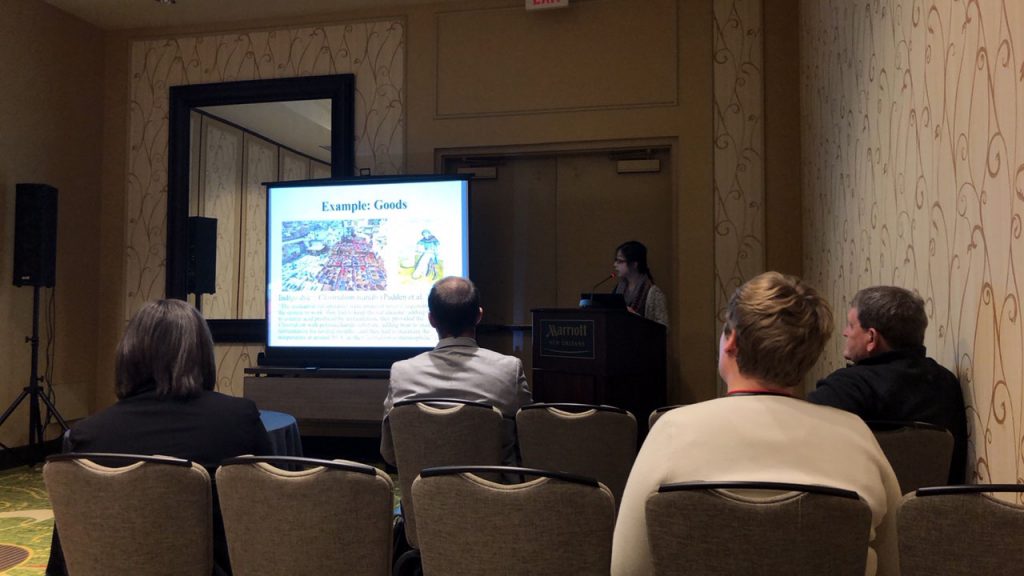By Grace Tsai
Winter break was both exciting and stressful. Exciting because we received some unexpected results from the microbial laboratory work, but stressful because we were rushing to have the results ready in time to present them at the Society for Historical Archaeology conference in New Orleans.

Grace Tsai, SBSB’s principal investigator, presenting at the Society for Historical Archaeology (SHA) Annual Conference. Photo by Rogelio Casas

Erika Davila presenting on the microbiological work from the Ship Biscuit & Salted Beef Research Project. Photo by Rogelio Casas
Although we had isolated several pure culture strains, we only had time to do DNA extractions and send off 10 samples from the salted beef for sequencing, as one of our presentations focused primarily on the microbes from salted beef itself. We received the sequencing results only 2 days before we were scheduled to present! Three of the samples were fungal, so the lab was unable to process them in the short amount of time we had.
Dr. Elizabeth Latham identified the 7 bacterial samples by comparing the DNA results from the laboratory with a master database. Our samples revealed that every single sample was a different genus.
In fact, 3 of the 7 bacterial samples were entirely new species. This is not what we had hypothesized, because we were expecting the extremely salty brine to prevent most taxa from growing, and for any microbes to be halophiles (bacteria that love salt). It’s too early to say the exact function, if any, of these microbes on meat preservation or decay, or even their predicted effect on the health of those who consumed it. However, it is interesting to note that it took the beef approximately 30 minutes of heavy boiling before it was deemed sterile, so it is possible that the sailors’ food was not teeming with bacteria when consumed if they boiled it for long periods. We have yet to find any historical documents noting how long meat was boiled on ships–we assume more than 30 minutes given the amount of time it takes to get a cauldron boiling, but without any historical or archaeological evidence this is only conjecture. Moreover, even if the sailors were able to kill all the microbes in their meat, this does not guarantee safety because bacteria can produce toxins that are not always destroyed with heat.
Many have questioned the reason we believe we will find beneficial microorganisms (probiotics) in the food especially given that the sailor diet is almost always unhealthy and unsanitary in historical texts. Our hypothesis is that although the modernization of food brought food security, maintenance of hygiene and sanitization, and standardization of food reproducibility, it also reduced the types and amounts of microbes humans ate in the past as a whole. Recent studies note that communities practicing pre-industrial foodways have a lower frequency of obesity, diabetes, gastrointestinal diseases and many other chronic non-infectious diseases, and that the decrease in such diseases was also correlated to an increase in gut microbiome diversity (O’dea, 1984; Martínez et al., 2015). Modernization eliminated a lot of good and bad bacteria. Now that we have recreated historical shipboard foods using the near exact ingredients and methodology as in the past, we hope we may find these microorganisms that were eaten in the past, both the good and the bad.
This semester started off with such exciting results and we look forward to what the rest of this year will bring!
Note: For those who do not know what probiotics are, or how they work, here is a useful website that explains simply what probiotics are and what they do. https://www.healthambition.com/probiotics/


